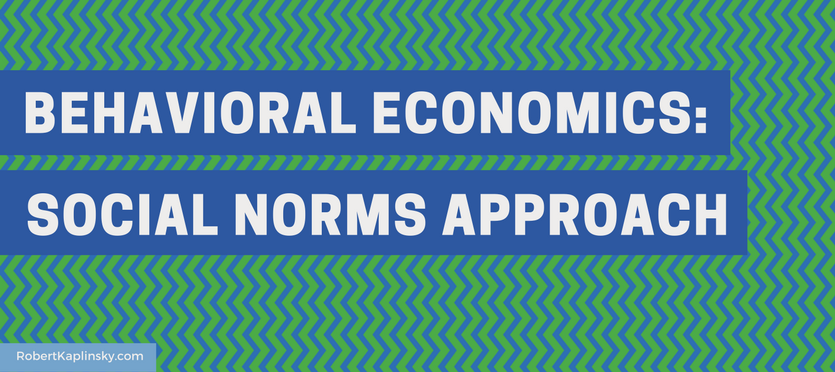NOTE: This is one of a series of ten blog posts on cognitive biases that have applications in education.
I believe that of all the cognitive biases, the social norms approach has the most promise for education. It helps fill the gap where educators want to make a change but aren’t sure which change is most likely to have the results they are looking for. Imagine this situation that, unfortunately, all educators have experienced.
A teacher just finished a unit and gave his students an assessment. The teacher gets the results back only to see that they are much, much worse than he had expected. It’s a pretty low time filled with frustration and disappointment. At that moment the teacher may realize that something needs to change yet have little idea as to what that change should be. Queue the social norms approach.
The social norms approach provides information about what other people are doing to help a person make a decision. This information is akin to the Who Want’s To Be A Millionaire’s “Ask the Audience” lifeline. The contestant always retains the right to choose whatever answer he or she wants, but having information about what other people think helps make a more informed choice. Similarly, I find it extremely valuable to shop websites that show me other customers’ ratings, reviews, or what products customers ultimately purchased. I can still purchase whatever product I want, but the extra information helps me make better choices.
An interesting option may be to poll the students themselves. Consider making a short Google Form survey or other poll that asks students about their study habits. For example:
- On average, how many minutes do you spend studying for a test or quiz?
- Do you study alone or in a group?
- Do you go to after school tutoring?
If you merge that data with the students’ grades (quizzes, tests, finals, semester, previous year, etc.), you can come up with statements to share with the class like, “Students who study 20 or more minutes per night were 25% more likely to have higher quiz scores than students who studied less than 20 minutes per night.”
It does need to be stated that I am not trying to imply that these are the best strategies to encourage. Feel free to change the strategies to ones you would prefer that students do more. Also, the reality is that self polling data is always skewed by responders answering in the way they believe the surveyor wants them to respond. Even with those caveats acknowledged, some valuable opportunities emerge.
I would love feedback on ways we acquire data as well as provide it to teachers in a timely and helpful manner. Where else can this approach be used?


I think you nailed it when you said, “Unfortunately many of them do not know the strategies needed to achieve this success and their families may not be prepared to support them either.”
I often wonder this and wish I had a solution.
The situation you presented is after the fact that students took the test. I’m curious what could have been differently before the test. How can the social norms be applied in class. I believe that many students benefit from the in-class time to prepare for an exam. I’d love to explore options for teachers to construct a classroom that allows students opportunities to have more focused and intentional test prep.
This cognitive bias is simultaneously the one I am least able to implement yet BY FAR has the most potential. I hope to read this post in a few years and look back at how much better I am at implementing it.